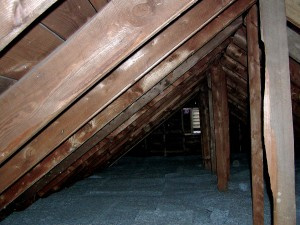Depending on the climate and the thickness of the existing insulation it may make sense to leave the old insulation in place.
Insulating gable ends in conditioned attic.
An exception to the rule would be if you are installing a foil radiant barrier system.
Poorly insulated ducting can cause heat loss in colder months and the loss of conditioned air in the summer in vented attics.
Hire a pro to install spray foam insulation.
The superattic system creates a continuous air and insulation barrier directly beneath the attic roof with no thermal bridging to compromise energy.
When an unconditioned attic space is remodeled into living space the position of the insulation has to change bringing the attic inside the building envelope.
Once you get the gable ends framed correctly you will be able to insulate the attic.
Staple the foil to the sides of the wood strips and make sure it won t sag or make contact with the deck when you add insulation.
When the attic becomes part of the home to be heated and cooled open wall gable vents and roof vents are no longer feasible but the underside of the roof the sheathing and rafters can still.
If you re considering turning your attic into conditioned storage or living space it s worth changing tactics to insulate between the rafters and wall joists instead of the floor.
Usually the only time you would insulate a gable end is when the other side of it is a heated living space in your home.
When insulating a attic there is usually no need to insulate the gable ends so long as the attic floor has been insulated.
That would be about r17 at center cavity but no thermal break over the framing.
You can use rigid foam panels or do as tom silva does with nearly all houses these days.
The loss of energy efficiency means some designers choose to move the ductwork into the conditioned areas of the home and leave the attics unvented.
In most cases the existing insulation on an attic floor should be removed when an unconditioned attic is converted to a conditioned attic.
The superattic system utilizes proprietary silverglo rigid foam insulation panels to fully seal and insulate the attic directly beneath the roof rafters and directly inside the gable ends.
But if you have a conditioned attic the insulation will be installed between attic rafters and perhaps directly beneath the rafters as well to keep the attic comfortable when it s uncomfortably hot or cold outside.





























